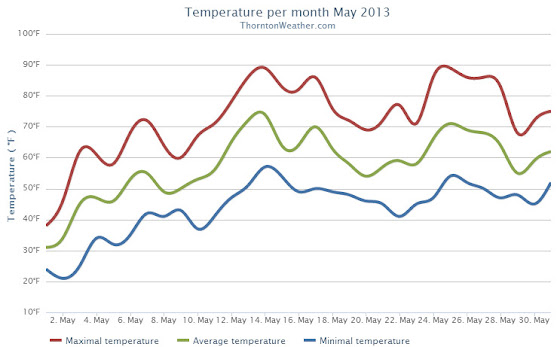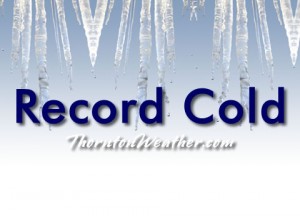
As April comes to an end we see fewer snow events and a greater occurrence of spring severe weather. Our look back at this week in Denver weather history shows some snowstorms but also dangerous lightning, hail and even tornadoes.
From the National Weather Service:
25-27
In 1877…snow ended around 7:00 am on the morning of the 27th… After falling continuously for 48 hours and totaling an estimated 13 inches in the city. The storm…likely accompanied by strong winds…caused trains to be delayed for 2 to 3 days. One or two roofs of small buildings were crushed by the weight of the snow…and many tree branches were broken in the city. There were a number of reports of livestock losses. One stockman lost 17 horses and several cattle from the snow and cold. Precipitation totaled 1.30 inches from the storm.
26-27
In 1906…rain changed to heavy snow overnight and totaled 7.0 inches over downtown Denver. North winds were sustained to 16 mph on both days. Precipitation totaled 2.16 inches.
In 1932…the temperature remained below freezing for more than 30 consecutive hours. For about 4 of those hours the temperature hovered around 24 to 25 degrees. At this time some early cherry trees were in bloom and apple and lilac blossoms were beginning to open. The leaves of many plants were partly unfurled and vegetation in general was correspondingly advanced due to the warm weather from the 11th to the 22nd. However…there was little apparent injury to foliage and blossoms…but some of the early cherry and apple blossoms were injured. Rain changed to snow on the 26th and continued intermittently through the 27th. Snowfall totaled only 2.0 inches and northeast winds gusted to 22 mph on the 26th.
In 1964…strong winds caused damage to buildings…trees…and power lines. Sustained winds of 37 mph with gusts of 50 to 60 mph were recorded in metro Denver. West-northwest winds gusted to 44 mph at Stapleton International Airport on the 26th.
27
In 1955…west winds at 43 mph with gusts as high as 55 mph were recorded at Stapleton Airport where blowing dust briefly reduced the visibility to 3/8 mile.
In 1966…a northwest wind gust to 51 mph was recorded at Stapleton International Airport.
27-28
In 1919…rainfall totaled 2.03 inches for the two days… Along with a trace of snowfall. Northwest winds were sustained to 24 mph with gusts to 26 mph on the 27th.
In 1975…high winds gusting to 85 mph severely damaged a mobile home in Boulder and caused other minor damage. West winds gusted to 46 mph at Stapleton International Airport on the 28th.
In 1996…heavy snow fell over portions of the Front Range foothills west of Denver. Snowfall amounts ranged from 4 to 7 inches. Only 0.3 inch of snow fell at the site of the former Stapleton International Airport. North winds gusted to 41 mph at Denver International Airport on the 27th.
28
In 1894…southwest winds were sustained to 35 mph with gusts as high as 60 mph.
In 1896…apparent post-frontal bora winds from the northwest were sustained to 43 mph with gusts as high as 56 mph. Rainfall totaled 0.22 inch.
In 1990…high winds raked the northeastern plains and eastern foothills from Boulder north. Wind gusts to 70 mph were recorded in Boulder. West winds gusted to 41 mph at Stapleton International Airport.
In 2001…a 21-year-old man was struck by lightning along the shoulder of I-225 near Parker road. His brother’s car had broken down and he stopped to help. The bolt briefly stopped the man’s heart and caused the right side of his body to go numb.
In 2003…severe thunderstorms produced large hail across southern metro Denver. Hail to 1 3/4 inches in diameter fell in Englewood and 2 miles east of Centennial Airport. Hail as large as 1 1/2 inches in diameter fell in Aurora near Cherry Creek. Other large hail reports included 1 inch hail near Bennett…and 7/8 inch hail in greenwood village and at Centennial Airport.
28-29
In 1950…snowfall totaled 6.3 inches at Stapleton Airport…but only 3.5 inches over downtown Denver.
In 1960…heavy snow fell at Stapleton Airport where 8.6 inches of snow were measured. North winds gusted to 38 mph. Most of the snow…6.9 inches…fell on the 29th.
Continue reading April 27 to May 3: This Week in Denver Weather History




